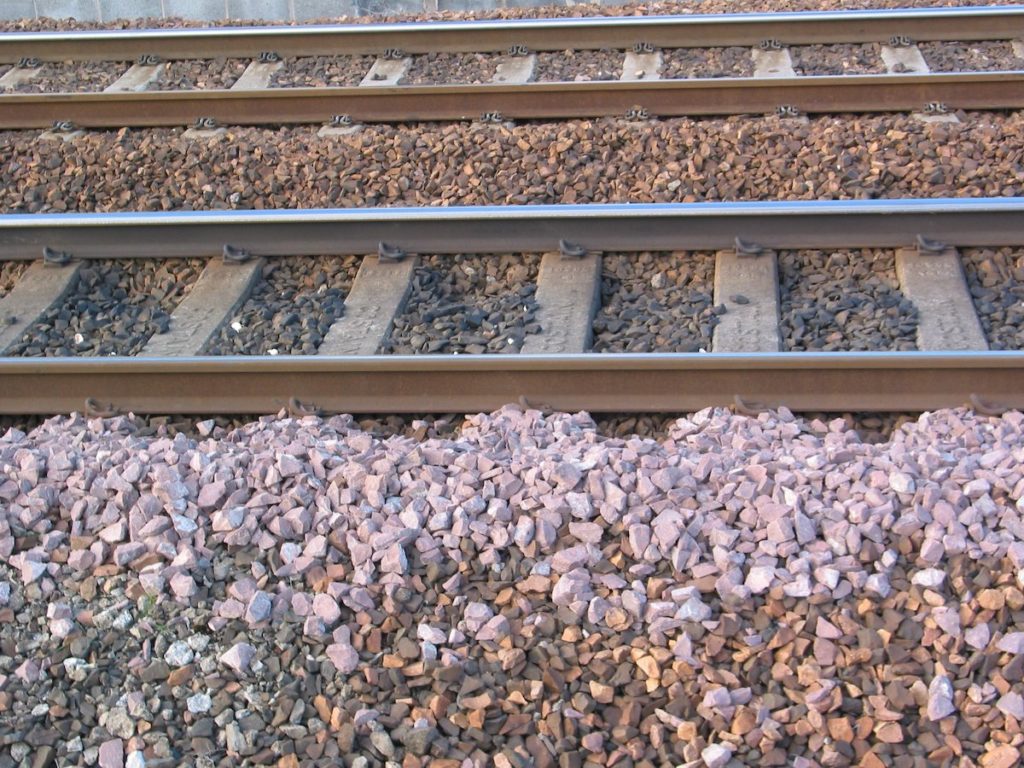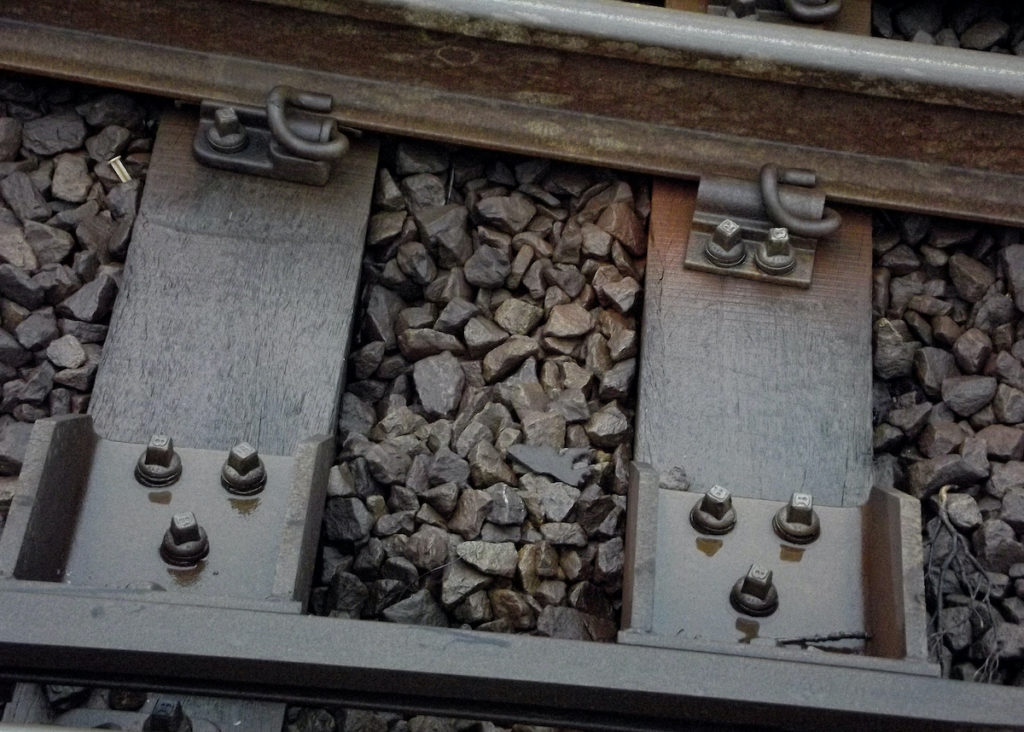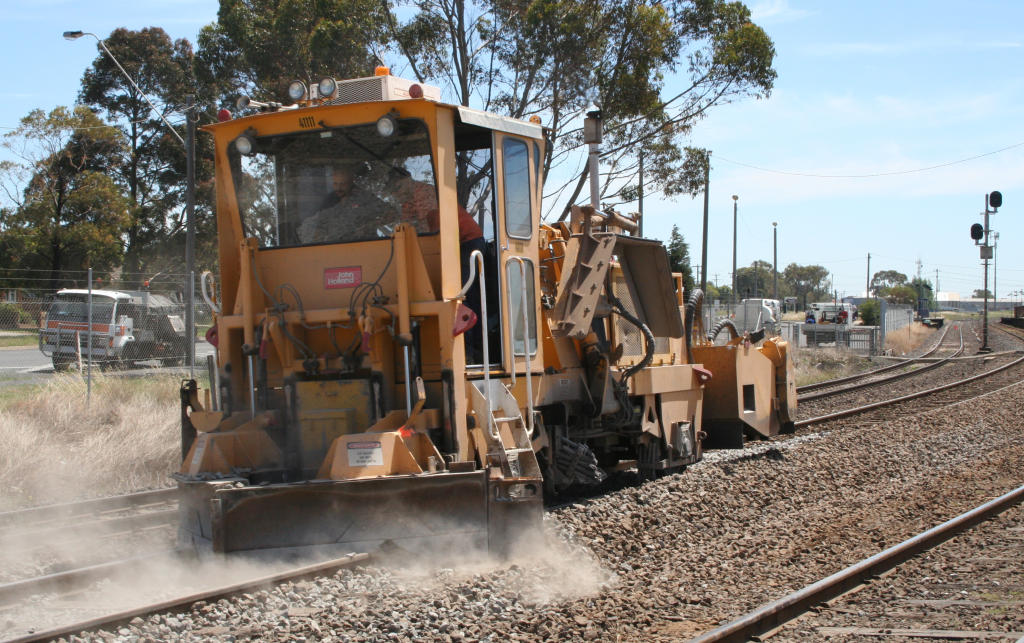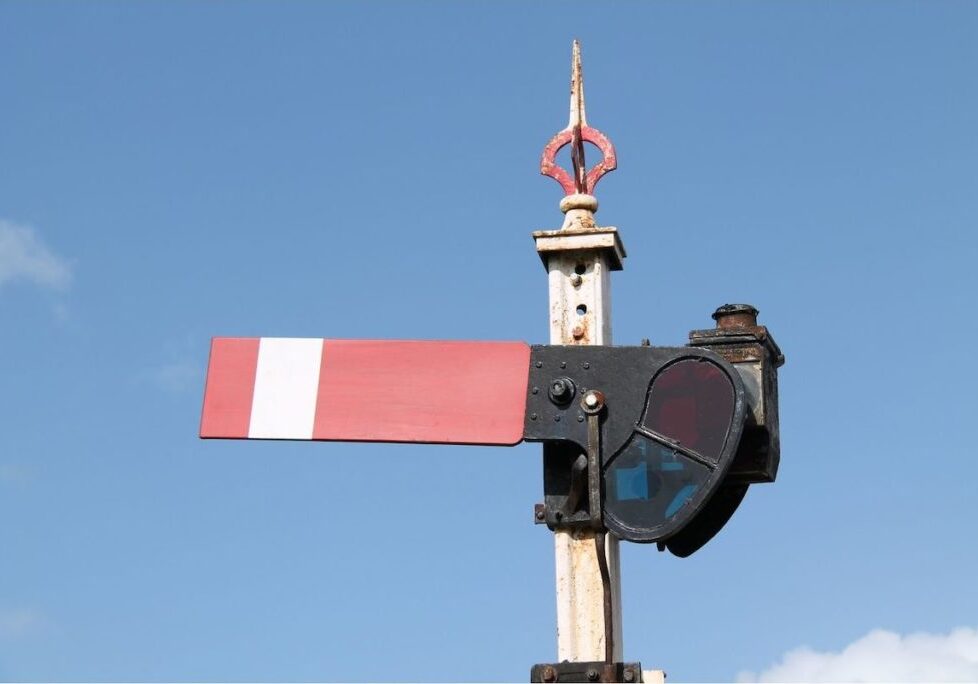Why do railway tracks have crushed stones alongside them?

It’s probably not something you have ever really thought about, however, the next time you are near a railway track, take a closer look at what sits beneath and alongside a railway track, no matter where you are in the world: crushed stones.
These crushed stones are known as ballast, and they serve a number of crucial roles in helping to maintain railway tracks and ensure the safety of the railway vehicles travelling along them.
What is track ballast?
Track ballast is the name given to the rough, sharp-edged stones that are found underneath and alongside railway tracks. They basically form the track bed on which the sleepers are then laid. The track ballast is initially laid on the bare ground, helping to raise the track level (more on this later). Once the ballast has been laid, the sleepers are put into position at equal distances apart and more track ballast is then packed between the sleepers and to the side, ready for the railway tracks themselves to be laid on top.
What is a railway sleeper?
A railway sleeper, sometimes known as a “cross tie” in the USA or simply “railroad ties”, are beams that were traditionally made from hardwood that are laid perpendicular to the direction of the track at equal spacing apart. They are extremely heavy, weighing up to 90kgs and you can fit around 2,000 of them for every kilometre of track.
Whilst they have traditionally been made from hardwood, heavily trafficked modern railway lines are increasingly turning to manmade alternatives including composite plastic, steel and more commonly pre-stressed concrete.
You will still see wooden sleepers in place on railway tracks throughout New Zealand, however, a lot of the new tracks that are being laid, as well as sleeper replacements are being carried out using pre-stressed concrete sleepers.
Once the sleepers are laid, the railway track itself it attached to the sleepers. Tracks are not, however, nailed onto the sleepers in a fixed position. The movement caused by heat expansion and contraction along the rail could cause the track to bruckle or break if it was fixed to the sleepers so they are instead attached using clips or anchors that allow for longitudinal movement.
The main function of a railway sleeper is to provide a stable, even platform for the railway tracks and the ballast plays a key role in keeping the sleepers stable and level.

Why are track ballast stones so sharp?
One thing you will notice about the stones used for track ballast is that they are extremely rough and sharp-edged. This is important. If you were to use smooth-sided stones, like the ones you might find in a riverbed or in the ocean, there is a good chance these would roll or slide over each other when a train passes over.
The sharp edges of the stones make it very difficult for them to move – they essentially lock into place as the sharp edges cut into each other, helping to create an extremely stable base for the railway sleepers and track to be laid.
Benefits of track ballast
As well as providing an extremely sturdy and stable base for the sleepers and track to be laid, track ballast also has a number of other benefits.
Railway track designers and engineers are faced with a number of challenges when laying hundreds of kilometres of track, not least of which is creating an even surface for the track to be laid.
The steel tracks are subject to a lot of pressure from moving loads, not to mention the impact of the climate and the surroundings. They need to be able to cope with this stress in order to reduce the required maintenance and improve the overall safety of the tracks.
Contraction and expansion, ground movement and vibration are all potential issues that could cause defects in the track along with the growth of vegetation and roots from nearby trees and shrubs.
Ballast is a great way to protect against a lot of these issues.
As well as helping to ensure the track stays in place when heavy trains pass over the tracks, ballast also plays an instrumental role in keeping any vegetation in check that grows nearby, helping to keep the tracks clear of any potential debris but also stunting the growth of any roots that could grown under the track and cause misalignments.
Ballast also helps to stop the tracks from flooding. Tracks will often be built up off the bare ground with some foundation that the ballast then sits on. The ballast is a great material with excellent draining properties that helps to ensure tracks do not flood causing track closures and delays. As the water drains away from the tracks, it also ensures the ground beneath the ballast does not become saturated, ensuring a solid foundation for the tracks.
Summary
Track ballast is not a new concept and has in fact been used for centuries with very little change during that time to the way tracks are laid. The ballast distributes the load of the sleepers, which in turn bear the load of the train on the track laid on top of the sleepers.
Without the ballast in place, railway lines would simply not be able to cope with the stress from the weight of the trains passing over them, not to mention the impacts of expansion and contraction.
So, the next time you are near a railway line and you see the loose stones all around, you will now hopefully have a greater respect for the role they play in getting you safely to your destination.

Continue reading
The evolution of railway electrification in New Zealand
Railways are one of the most efficient mode of transportation and have been crucial to the growth and expansion of many western countries. In fact, railways have been an integral part of the social and economic development of New Zealand since as far back as the 1860s. And, although this information has gone relatively unmarked…
Overhead Line Electrification (OLE) for Railways
Answers to your 5 most commonly asked questions While electric trains have been around in New Zealand since the early 1900s, they don’t often get much publicity. Consequently, we tend to take them for granted and have little idea of how electric railway systems actually work. Here at Alpha Rail, our goal is to increase…
How do railway signals work?
An important aspect of railway design, construction and safety is the signals deployed along the track. Signalling is a crucial part of the railway infrastructure and over the past decade, upgrades to signalling systems on railway networks around the world have helped to improve the overall safety of those rail networks, enabling trains to move…
Get in touch today
We understand all of the requirements and don't produce
anything that can't be built.
EXPLORE THE SITE
CONTACT US
PO Box 71050, Rosebank, Auckland, 1348
© Copyright 2025 - Alpha Rail Ltd.



